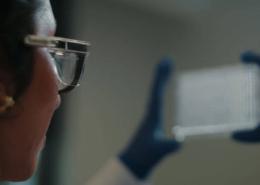How Excess Sugar Affects Your Health

It’s difficult to avoid added sugars in your food. Seventy-four percent of packaged foods — including staples such as bread and ketchup — contain added sugars, often listed in the ingredients as sucrose, high-fructose corn syrup, dextrose, barley meal and rice syrup. [1] Even healthy-sounding foods, such as yogurt and whole-grain breakfast bars, can contain surprising amounts of sugar. [2]
According to the 2015-2020 Dietary Recommendations for Americans, fewer than 10 percent of daily calories should come from added sugars. [3] It is estimated, however, that seven out of 10 Americans age one and older eat more than the recommended amount of sugar each day. On average, an American eats the equivalent of 17 teaspoons of added sugar daily. [3, 4] Americans aren’t alone. In Europe, sugar intake ranges from 7% of total energy intake to almost 25%, depending on age and country. [5]
When consumed, fructose (one type of sugar) is almost entirely metabolized by the liver. [6] Excessive fructose intake has been linked to increased fat production in the liver, risk of developing non-alcoholic fatty liver disease (NAFLD) and obesity – which can lead to a higher risk of developing Type 2 diabetes and cardiovascular disease. [7,8]
Fatty Liver Disease
The connection between fructose and fatty liver goes back to ancient Rome, where chefs would make the delicacy foie gras by feeding geese diets heavy in dates, a rich source of fructose. [8] Today, scientists believe that high-sugar diets are contributing to the rise of NAFLD. [8] Non-Alcoholic Fatty Liver (NAFL) results when the liver accumulates fats due to mainly an increase in fat production and transfer of fat from the adipose tissue to the liver. NAFL can progress to non-alcoholic steatohepatitis (NASH), a condition characterized by high fat level, inflammation, and cell damage in the liver. [10] NASH is a silent disease, often progressing slowly with no obvious outward symptoms. Without detection and intervention, severe and irreversible liver damage due to NASH may occur. [11]
Obesity
Adding sugar to food and beverages makes them more calorie dense.[12] Each gram of sugar contains four calories. That doesn’t sound like much, but it adds up. A typical can of soda, for instance, contains approximately 40–50 grams of added sugar, or 160–200 sugar-based calories.[13] In time, excess calories can lead to excess pounds.
Type 2 Diabetes
In healthy individuals, the body secretes insulin in response to rising blood sugar levels. Insulin helps the body convert sugar to energy. In people with type 2 diabetes, the body isn’t as responsive to insulin — a condition called insulin resistance.[14] Diets high in added sugars, specifically fructose, have been associated with reduced insulin sensitivity. [15]
Cardiovascular Disease
High blood pressure and high triglyceride levels are more common in people whose diets contain a lot of added sugars .[16, 17] Increases in these levels is associated with higher risk of heart disease, heart attacks and stroke.[17, 18] In fact, one study found that people who took in 25 percent or more of their daily calories from sugar were more than twice as likely to die from heart disease as those whose diets included less than 10 percent added sugar.[19, 20, 21]
Cutting back on added sugars is one way you can protect your health. The small change may help you prevent disease and lead to improved, overall well-being.
Sources
[1] Ng, S.W., Slining, M.M., & Popkin, B.M. (2012). Use of caloric and noncaloric sweeteners in US consumer packaged foods, 2005-2009. Journal of the Academy of Nutrition and Dietetics , 112(11), 1828-1834.e1821-1826. Retrieved from https://www.ncbi.nlm.nih.gov/pmc/articles/PMC3490437/
[2] Ibid
[3] Ibid
[4] Dietary Guidelines for Americans 2015-2020. Cut Down on Added Sugars. Retrieved from https://health.gov/dietaryguidelines/2015/resources/DGA_Cut-Down-On-Added-Sugars.pdf
[5] World Health Organization. “WHO calls on countries to reduce sugars intake among adults and children.” 4 March 2015. Retrieved from https://www.who.int/mediacentre/news/releases/2015/sugar-guideline/en/
[6] Havel PJ. “Dietary fructose: implications for dysregulation of energy homeostasis and lipid/carbohydrate metabolism”. Nutr Rev 2005 ; 63:133–57. Retrieved from https://www.ncbi.nlm.nih.gov/pubmed/15971409
[7] Jegatheesan P and De Bandt, J. Fructose and NAFLD: The Multifaceted Aspects of Fructose Metabolism. Nutrients 2017;9(3):230. Retrieved from https://www.ncbi.nlm.nih.gov/pmc/articles/PMC5372893/
[8] Jensen, Thomas et al. "Fructose And Sugar: A Major Mediator Of Non-Alcoholic Fatty Liver Disease." Journal of Hepatology 68.5 (2018): 1063-1075. Web. 1 Apr. 2019. Retrieved from https://www.ncbi.nlm.nih.gov/pmc/articles/PMC5893377/
[9] "The Toxic Truth." SugarScience.UCSF.edu. N. p., 2013. Web. 1 Apr. 2019. Retrieved from http://sugarscience.ucsf.edu/the-toxic-truth/#.XJuZ1ihKiU
[10] Marra, F., et al. “Pathophysiology of NASH: perspectives for a targeted treatment.” Curr Pharm Des Feb, 2013. Retrieved from https://www.ncbi.nlm.nih.gov/pmc/articles/PMC3984586/
[11] Zezos, Petros and Renner, Eberhard L. “Liver transplantation and non-alcoholic fatty liver disease.” World J Gastroenterol. 14 Nov. 2014. Retrieved from https://www.ncbi.nlm.nih.gov/pmc/articles/PMC4229518/
[12] "Don't Get Sabotaged By Added Sugar." Mayo Clinic. N. p., 2019. Web. 1 Apr. 2019. Retrieved from https://www.mayoclinic.org/healthy-lifestyle/nutrition-and-healthy-eating/in-depth/added-sugar/art-20045328
[13]https://www.google.com/search?q=how+many+grams+of+sugar+in+can+of+soda%3F&oq=how+many+grams+of+sugar+in+can+of+soda%3F&aqs=chrome..69i57j0l5.5415j0j9&sourceid=chrome&ie=UTF-8
[14] "Type 2." American Diabetes Association. N. p., 2019. Web. 1 Apr. 2019. Retrieved from http://www.diabetes.org/diabetes-basics/type-2/
[15] Macdonald, I. A. "A Review Of Recent Evidence Relating To Sugars, Insulin Resistance And Diabetes." European Journal of Nutrition 55.S2 (2016): 17-23. Web. 1 Apr. 2019. Retrieved from https://www.ncbi.nlm.nih.gov/pmc/articles/PMC5174139/
[16] Malik V.S., Popkin B.M., Bray G.A., Després J.-P., Hu F.B. Sugar-sweetened beverages, obesity, type 2 diabetes mellitus, and cardiovascular disease risk. Circulation. 2010;121:1356–1364. doi: 10.1161/CIRCULATIONAHA.109.876185. [PMC free article] [PubMed] [CrossRef] [Google Scholar]
[17] Bray G.A. Fructose and risk of cardiometabolic disease. Curr. Atheroscler. Rep. 2012;14:570–578. doi: 10.1007/s11883-012-0276-6. [PubMed] [CrossRef] [Google Scholar]
[18] Marckmann P. Dietary treatment of thrombogenic disorders related to the metabolic syndrome. Br. J. Nutr. 2000;83(Suppl. 1):S121–S126. doi: 10.1017/S0007114500001057. [PubMed] [CrossRef] [Google Scholar]
[19] Bray G.A., Popkin B.M. Calorie-sweetened beverages and fructose: What have we learned 10 years later. Pediatr. Obes. 2013;8:242–248. doi: 10.1111/j.2047-6310.2013.00171.x. [PubMed] [CrossRef] [Google Scholar]
[20] Feig D., Soletsky B., Johnson R. Effect of allopurinol on blood pressure of adolescents with newly diagnosed essential hypertension. J. Am. Med. Assoc. 2008;300:924–932. doi: 10.1001/jama.300.8.924.[PMC free article] [PubMed] [CrossRef] [Google Scholar]
[21] Nguyen S., Choi H.K., Lustig R.H., Hsu C.Y. Sugar-sweetened beverages, serum uric acid, and blood pressure in adolescents. J. Pediatr. 2009;154:807–813. doi: 10.1016/j.jpeds.2009.01.015. [PMC free article][PubMed] [CrossRef] [Google Scholar]
![]()





